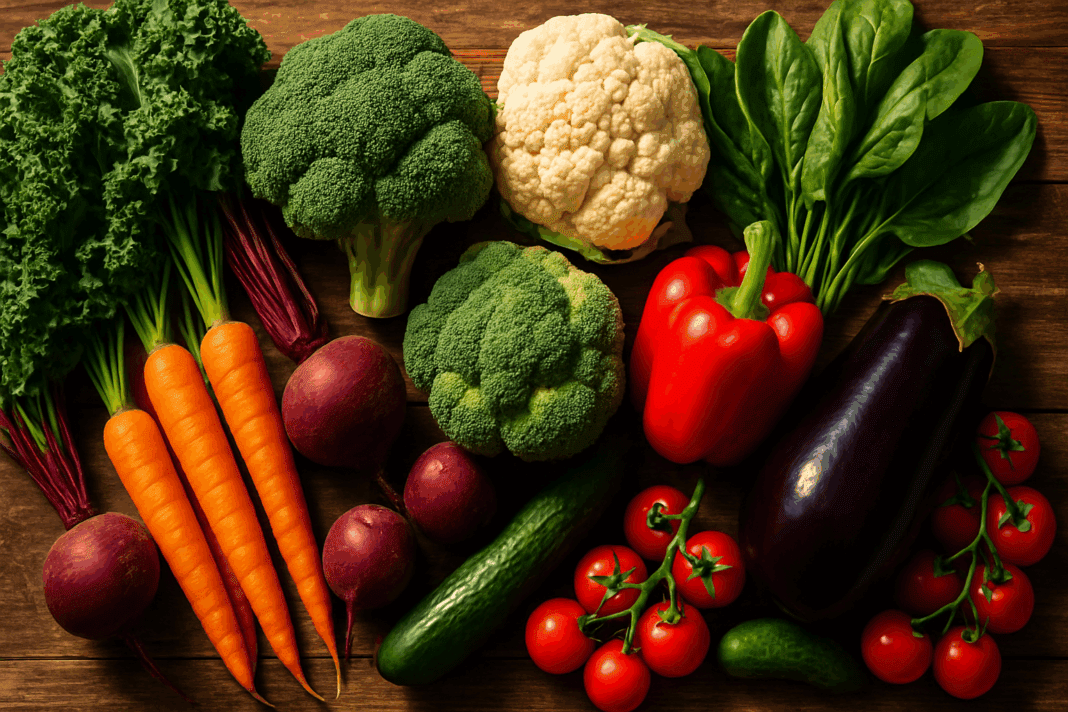In a modern food environment saturated with processed and convenience foods, the question “what are the vegetables you should be eating daily?” has never been more critical. Vegetables are not only foundational to a nutrient-dense diet, but they also serve as essential sources of vitamins, minerals, fiber, and antioxidants. Their regular consumption has been directly linked to improved digestion, immune function, cardiovascular health, and cognitive well-being. Yet despite the mounting evidence, many individuals still struggle to incorporate sufficient servings of vegetables into their daily meals. In this article, we’ll explore which vegetables offer the greatest health benefits, how to build a well-rounded vegetable food strategy, and why understanding your options from a food vegetables list can empower long-term wellness. Through an expert lens grounded in nutritional science and whole-food philosophy, this guide will help you make informed, practical, and enjoyable vegetable choices every day.
You may also like: Healthy Plant-Based Dinners Made Easy: Best Whole Food Plant-Based Recipes for Beginners and Beyond
Understanding the Power of Daily Vegetable Intake
To appreciate the importance of vegetables vegetables in daily nutrition, one must first understand the complex synergy of nutrients they offer. Unlike isolated supplements, vegetables deliver their nutrients in a matrix of fiber, water, and phytonutrients that support optimal absorption and metabolic function. Cruciferous vegetables, for instance, such as broccoli, cauliflower, and Brussels sprouts, are rich in glucosinolates—compounds that promote liver detoxification and may reduce cancer risk. Leafy greens like kale and spinach provide folate, lutein, and vitamin K, essential for brain health, vision, and blood clotting. Root vegetables such as carrots and beets offer beta-carotene and nitrates, which support cardiovascular and anti-inflammatory pathways.
When we ask “what are some vegetables that should form the core of a daily diet?” the answer depends partly on individual health needs, but universally, vegetables that are rich in color, texture, and density often offer the most diverse nutrient profiles. For example, the deep purple hue of eggplants indicates anthocyanin content, while the sulfur-rich compounds in garlic and onions serve as potent antimicrobials. Including a broad spectrum of these compounds creates what many nutritionists call a “vegetable rainbow,” ensuring that your microbiome, detox pathways, and cellular repair mechanisms have the substrates they need to function efficiently.
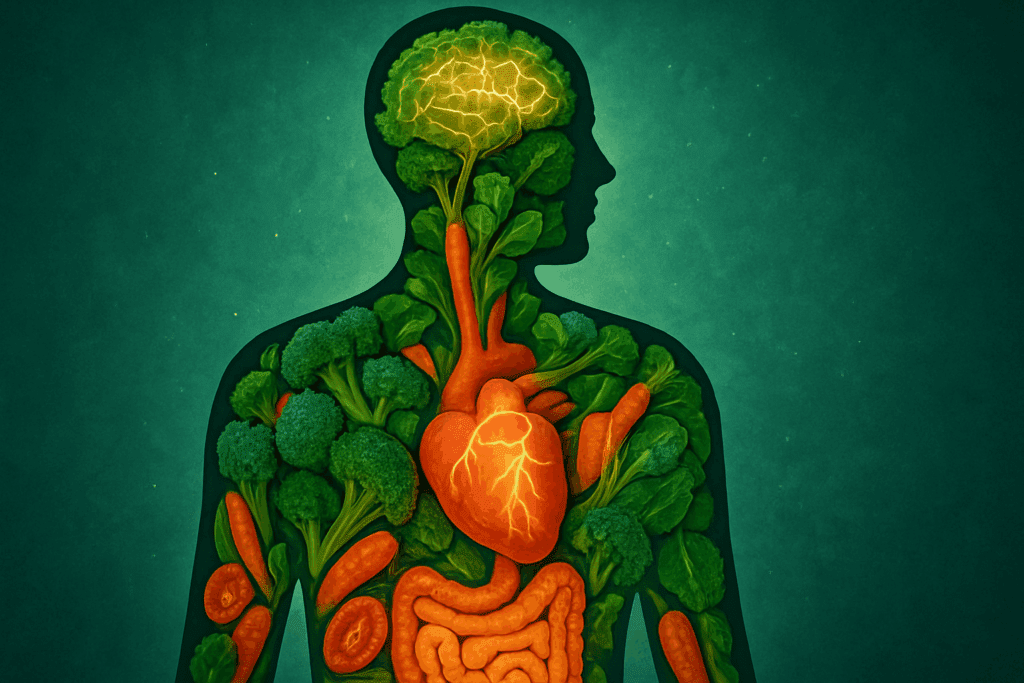
The Role of Vegetable Food in Preventing Chronic Illness
The inclusion of vegetable food in daily meals is not just about meeting dietary guidelines; it’s a proactive strategy against chronic disease. Numerous epidemiological studies link high vegetable intake with reduced incidence of heart disease, stroke, type 2 diabetes, and certain cancers. This protective effect is attributed largely to the anti-inflammatory, antioxidant, and fiber-rich properties of veggies vegetables. Soluble fiber from vegetables like carrots, sweet potatoes, and peas helps regulate blood sugar and cholesterol levels. Insoluble fiber found in celery and zucchini supports gastrointestinal health and reduces the risk of diverticulosis and colorectal cancer.
The phytochemicals in vegetables are also remarkably effective in modulating inflammation, a root cause of many degenerative diseases. Polyphenols, flavonoids, and carotenoids present in a diverse food vegetables list work synergistically with the body to reduce oxidative stress, improve endothelial function, and enhance immune responses. For individuals seeking to avoid medication reliance and maintain vitality into older age, prioritizing a wide variety of vegetables vegetables is an intelligent and evidence-based strategy. The body thrives on diversity, and vegetables provide this diversity better than any other food group.
Key Criteria for Selecting the Best Daily Vegetables
Choosing the best vegetables for daily consumption requires evaluating them based on nutrient density, versatility, digestibility, and sustainability. While all vegetables have value, some stand out due to their exceptionally high nutrient-per-calorie ratio. Leafy greens such as Swiss chard, collards, and arugula are low in calories but incredibly rich in magnesium, potassium, and vitamins A and C. These nutrients play essential roles in muscle contraction, blood pressure regulation, and collagen production. Cruciferous vegetables, on the other hand, support estrogen metabolism and detoxification pathways, making them especially beneficial for hormone balance.
Another consideration is glycemic impact. While most vegetables have a low glycemic index, starchy vegetables like corn and potatoes can spike blood sugar if consumed in excess or without accompanying fiber or fat. Understanding what are the vegetables that stabilize rather than disrupt blood sugar is crucial for those managing diabetes or insulin resistance. Non-starchy options like zucchini, bell peppers, asparagus, and green beans offer satisfying volume with minimal glycemic load.
It’s also important to consider preparation methods. Some vegetables, like tomatoes and mushrooms, become more bioavailable when cooked, releasing beneficial compounds like lycopene and ergothioneine. Others, such as cucumbers or radishes, retain their nutrients best when raw. A balanced food vegetables list should include a mix of both raw and cooked options for comprehensive nutrient access.
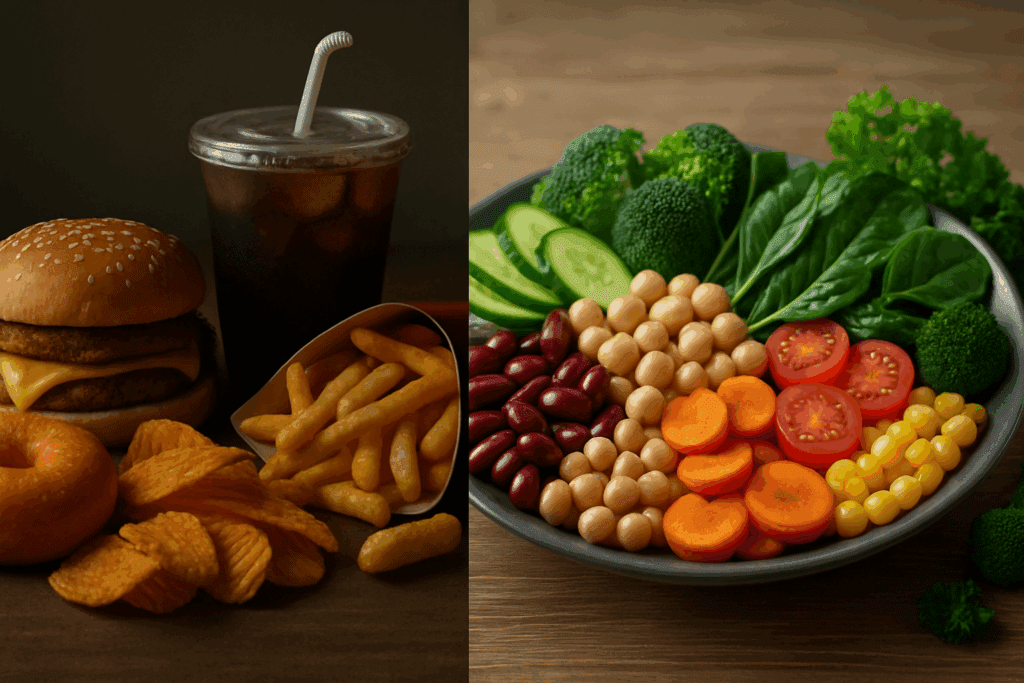
What Are the Vegetables That Offer Superior Gut Support?
The gut microbiome is a central player in health, influencing everything from mood to metabolism. Vegetables vegetables contribute to microbiome diversity by providing fermentable fibers and prebiotic compounds that nourish beneficial bacteria. Chicory root, Jerusalem artichokes, garlic, leeks, and onions are high in inulin, a prebiotic fiber that stimulates the growth of Bifidobacteria and Lactobacillus—two genera linked to improved immune function and reduced inflammation.
Fermented vegetable foods such as kimchi, sauerkraut, and pickled beets also introduce probiotics directly into the digestive tract, enhancing the ecosystem balance. Moreover, leafy greens contain specific types of sugars and polyphenols that certain gut bacteria preferentially feed on, further promoting microbial diversity. When considering what are some vegetables that support digestion, the inclusion of both soluble and insoluble fiber sources is key.
These functional benefits extend beyond digestion. A well-nourished gut microbiome produces short-chain fatty acids like butyrate, which have anti-inflammatory and anticancer properties. It also enhances nutrient absorption, hormone signaling, and neurotransmitter synthesis. In short, your gut bacteria thrive when you feed them a rich array of vegetables vegetables. This makes variety just as critical as quantity in daily vegetable consumption.

Vegetables and Cognitive Function: A Crucial Link
Emerging research underscores the connection between vegetable intake and brain health. High vegetable consumption is correlated with slower cognitive decline and reduced risk of dementia. This effect is thought to result from the rich antioxidant and anti-inflammatory compounds that protect brain tissue from oxidative damage. Dark leafy greens, especially kale, spinach, and beet greens, are associated with higher cognitive performance scores and are now being prioritized in brain-protective dietary protocols like the MIND diet.
What are the vegetables that best support cognition? Those high in folate, vitamin K, and nitrates seem to hold the greatest promise. Folate supports neurotransmitter synthesis, while vitamin K is involved in sphingolipid metabolism—a process critical to maintaining cell membrane integrity in the brain. Nitrates, abundant in beets and arugula, improve blood flow by enhancing nitric oxide production, which in turn delivers more oxygen and nutrients to brain cells.
Including a spectrum of brightly colored vegetables vegetables such as red peppers, purple cabbage, and orange carrots also ensures intake of diverse carotenoids like lutein and zeaxanthin. These compounds cross the blood-brain barrier and accumulate in neural tissues, where they act as antioxidants and enhance neural communication. The brain, a metabolically demanding organ, thrives on this kind of nutrient density, making vegetables an essential part of cognitive health at any age.
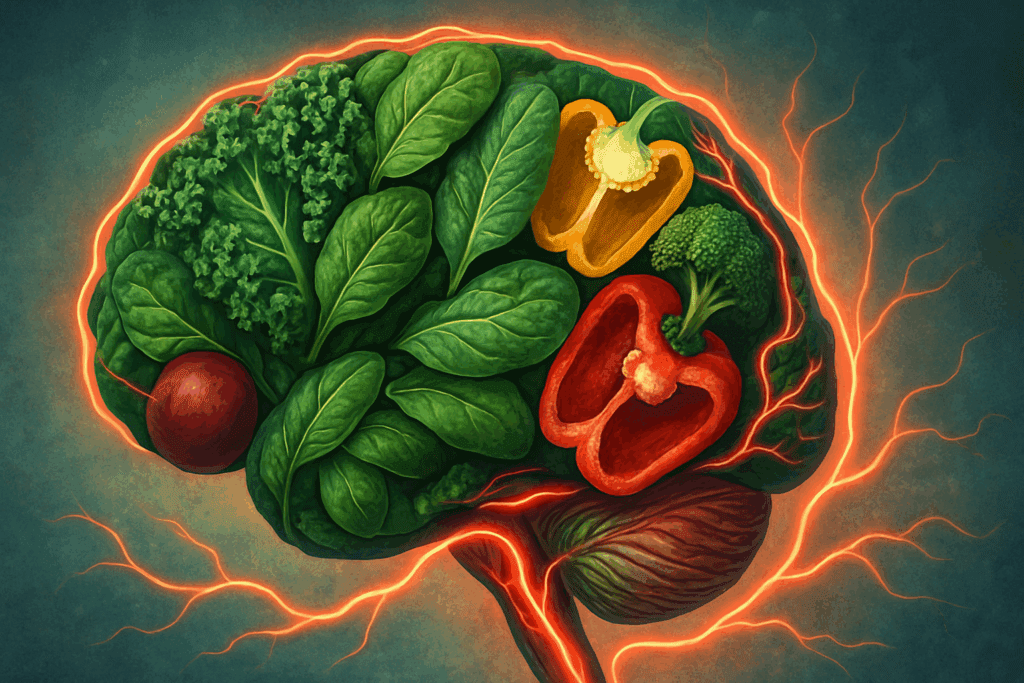
Building a Food Vegetables List That Works for You
Creating a personalized food vegetables list means aligning your selections with your lifestyle, health goals, taste preferences, and local availability. While there is no universal list that works for everyone, a strong foundation often includes the following categories: leafy greens, cruciferous vegetables, root vegetables, alliums, legumes, and seasonal specialties. Leafy greens should appear on your plate daily—think mixed salad greens, spinach in smoothies, or kale in stir-fries. Crucifers like broccoli and cabbage support detox and metabolic health. Root vegetables offer grounding, energizing carbohydrates with high nutrient density.
Allium vegetables such as onions, garlic, and scallions provide potent antimicrobial benefits and add depth of flavor to virtually any dish. Legumes, technically a separate plant family, are often grouped with vegetables due to their fiber and micronutrient profile; green peas, snow peas, and edamame are excellent examples. Seasonal vegetables vegetables, whether heirloom tomatoes in summer or winter squash in the colder months, ensure that your diet remains dynamic, diverse, and nutrient-rich.
A common mistake in vegetable selection is over-reliance on a few favorites. While it’s good to have go-to options, regularly rotating your choices expands your exposure to different phytochemicals and fiber types. This not only enhances nutrition but also keeps meals exciting and reduces the risk of food intolerances.
Cultural Diversity in Vegetable Food Traditions
Exploring global culinary traditions offers new insight into what are some vegetables that might be underutilized in your current routine. In Mediterranean cuisines, vegetables are central—eggplants, artichokes, and fennel are commonly paired with olive oil and herbs. Asian cuisines frequently highlight bok choy, daikon radish, and sea vegetables, which bring iodine, calcium, and unique polysaccharides to the table. Latin American diets incorporate jicama, nopales (cactus paddles), and chayote, each contributing a distinct texture and micronutrient profile.
Embracing the global diversity of vegetable food expands not only your nutrient intake but also your appreciation for the cultural and ecological dimensions of food. It helps shift the perception of vegetables from dietary obligation to culinary celebration. Food is both medicine and culture, and vegetables sit at the intersection of both domains.
Practical Strategies for Daily Integration
Despite best intentions, many people fall short of daily vegetable targets due to perceived inconvenience or lack of culinary inspiration. However, integrating more vegetables vegetables into your day can be both simple and satisfying. Begin with breakfast: add spinach to scrambled eggs, blend kale into smoothies, or spread avocado on whole-grain toast topped with radish slices. For lunch, load up grain bowls, wraps, or sandwiches with shredded cabbage, carrots, and cucumbers. Dinners can easily center around vegetable-forward dishes like stir-fries, roasted vegetable platters, or hearty soups.
Meal prep can also be a powerful tool. Washing, chopping, and storing vegetables in advance reduces barriers to usage and encourages spontaneous inclusion. Roasting trays of assorted vegetables at the beginning of the week provides ready-made ingredients for salads, bowls, and snacks. Freezing extra portions of cooked greens or pureed soups extends their utility and reduces food waste.
Even snacks can be opportunities to consume more veggies vegetables. Sliced bell peppers with hummus, celery with nut butter, or a small cup of vegetable soup can bridge hunger gaps without compromising health goals. The more familiar and visible vegetables become in your kitchen and lifestyle, the easier their daily inclusion becomes.
Why the Quality of Your Vegetables Matters
Not all vegetables are created equal in terms of nutritional value. Soil health, harvesting time, and post-harvest handling all influence the nutrient content of food. Organic vegetables, while not universally superior, tend to have lower pesticide residues and in some cases higher concentrations of certain antioxidants. Locally grown and in-season produce often retains more nutrients due to reduced transit and storage times.
Understanding what are the vegetables with the highest vitality often comes down to freshness. Leafy greens should be vibrant and crisp, roots should be firm and free of cracks, and herbs should be aromatic and green. Avoiding pre-cut or pre-cooked options when possible preserves nutritional integrity, especially for vitamin C, folate, and certain polyphenols, which degrade quickly after exposure to light, air, or heat.
Home gardening, even in small containers, is another way to ensure high-quality vegetables vegetables. Lettuce, kale, cherry tomatoes, and herbs grow well on patios or windowsills, providing nutrient-rich produce just minutes from harvest. This direct relationship with your food source enhances appreciation, flavor, and health outcomes.
Exploring the Emotional and Psychological Benefits of Eating Vegetables
Beyond physiological advantages, vegetables offer emotional and psychological benefits. Engaging with vibrant, fresh foods can elevate mood and reduce feelings of stress or anxiety. Preparing and consuming colorful meals creates a sensory experience that supports mindfulness and self-care. Studies have shown that diets rich in plant-based foods, especially vegetables, are associated with lower rates of depression and improved resilience.
This may be due in part to how vegetable nutrients influence neurotransmitter function. Folate, vitamin B6, magnesium, and tryptophan all play roles in serotonin and dopamine synthesis—key drivers of mood regulation. Antioxidants combat neuroinflammation, while fiber helps modulate the gut-brain axis through the microbiome. Eating vegetables vegetables, therefore, is not only a nutritional act but also a psychological one.
Moreover, the intentionality behind choosing and preparing vegetable food fosters agency and self-efficacy. It becomes an act of alignment between one’s values and actions, reinforcing a sense of personal integrity and care. In this way, vegetables are not only nourishing to the body, but also to the spirit.
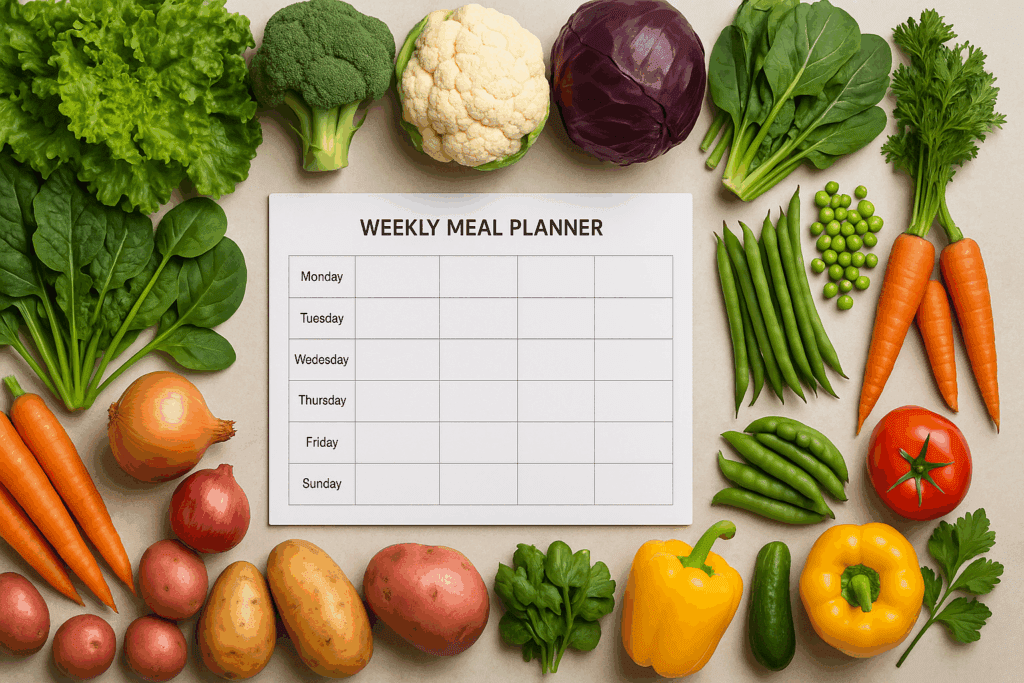
Frequently Asked Questions (FAQ) – Expanding on the Power of Vegetables in Health and Nutrition
1. How can understanding your local growing season enhance your vegetable intake?
Knowing when certain vegetables are in season in your region can revolutionize your relationship with food. Seasonal vegetables vegetables tend to be more nutrient-dense, fresher, and environmentally sustainable due to reduced transportation and storage needs. Exploring the seasonal food vegetables list at your local farmer’s market often introduces you to lesser-known produce, expanding your knowledge of what are some vegetables beyond the supermarket staples. This practice not only supports your local economy but also encourages culinary creativity—prompting you to try new recipes with veggies vegetables you might not usually buy. Most importantly, seasonal eating increases the likelihood of long-term adherence to a vegetable-rich diet by aligning with natural food cycles.
2. What psychological benefits come from incorporating more vegetables into your meals?
Beyond physical health, increasing your intake of vegetable food can significantly improve your mental and emotional well-being. Studies have found a positive correlation between diets rich in veggies vegetables and reduced symptoms of depression and anxiety. This may be linked to the high levels of antioxidants, folate, and fiber found in most items on any food vegetables list. In addition, preparing meals with vibrant, colorful vegetables vegetables offers a form of mindfulness, enhancing the sensory experience and promoting a deeper connection with what you’re eating. Understanding what are the vegetables that suit your mood or energy needs can even help you self-regulate more intuitively throughout the day.
3. Are there emerging vegetable innovations that improve nutrition or sustainability?
Yes, researchers are exploring innovations such as biofortified vegetable food crops and vertical farming to meet global nutrition demands sustainably. For example, scientists have developed carrots with increased beta-carotene and tomatoes enriched with antioxidants to better meet nutritional needs. These engineered veggies vegetables retain their natural taste while delivering higher health benefits, especially in areas with limited access to fresh produce. When evaluating what are some vegetables to prioritize in such innovations, the focus often falls on those already common in global diets, like leafy greens, root crops, and legumes. These developments not only enhance nutrition but reduce environmental strain through resource-efficient agricultural methods.
4. How can vegetables support post-workout recovery in athletes?
Athletes often overlook vegetable food in favor of protein-heavy meals after training, but many vegetables play a crucial role in recovery. Leafy greens like spinach and kale help reduce inflammation, thanks to their high antioxidant and magnesium content. Including veggies vegetables in post-exercise meals accelerates glycogen replenishment when combined with complex carbs, while cruciferous vegetables vegetables such as broccoli aid detoxification. Understanding what are the vegetables that align with your athletic goals can help you design a tailored, plant-forward recovery routine. Many endurance athletes now turn to fermented vegetable dishes as well, which support gut health and nutrient absorption.
5. What role do vegetables play in balancing blood sugar levels throughout the day?
Vegetables vegetables high in fiber and low in starch are crucial in maintaining stable blood sugar levels, especially for those managing insulin resistance or diabetes. By slowing digestion, these veggie-rich meals prevent glucose spikes and crashes that lead to energy slumps. Incorporating items from a well-planned food vegetables list like bitter gourd, zucchini, and leafy greens can create sustained energy release. It’s also worth noting that roasted or raw veggie preparations preserve more of the nutrients that contribute to glycemic balance. Learning what are some vegetables with low glycemic impact can be a game-changer for metabolic health.
6. How do vegetables influence gut microbiome diversity?
A diverse intake of veggies vegetables contributes to a healthy gut microbiome by providing prebiotic fibers that fuel beneficial bacteria. Different types of vegetable food offer distinct fermentable fibers, each promoting specific strains of gut flora. Regularly rotating what are the vegetables in your diet ensures you’re nourishing a wide array of microbes, which enhances digestion, immunity, and even mental clarity. Additionally, fermented vegetables vegetables like kimchi and sauerkraut add probiotic organisms to the gut, further enriching microbial diversity. A thoughtfully curated food vegetables list should include both raw and fermented options for a holistic gut health strategy.
7. What are the long-term cognitive effects of a vegetable-rich diet?
Emerging research suggests that regular consumption of vegetable food is linked to improved cognitive longevity. Antioxidants found in colorful vegetables vegetables—such as anthocyanins in purple cabbage and flavonoids in bell peppers—help protect brain cells from oxidative damage. A varied food vegetables list that includes leafy greens, cruciferous vegetables, and bright-colored produce is associated with slower cognitive decline. When evaluating what are some vegetables to include for brain health, prioritize those rich in folate, vitamin K, and lutein. Incorporating these regularly into meals can serve as a proactive, natural approach to preserving memory and focus into older age.
8. How can vegetables help address micronutrient deficiencies globally?
Vegetable food is instrumental in combating widespread deficiencies in iron, vitamin A, and folate—nutrients often lacking in both developing and developed nations. For instance, dark leafy veggies vegetables like collards and swiss chard are excellent sources of plant-based iron and calcium. Creating targeted food vegetables lists that focus on regionally available crops can help address these public health gaps effectively. When communities understand what are the vegetables they can cultivate locally with high nutritional density, it promotes both food sovereignty and improved health outcomes. Programs that incorporate these vegetables vegetables into school lunches and community meals are seeing long-term benefits in childhood development and maternal health.
9. What cultural differences influence the perception and use of vegetables globally?
Different cultures have distinct relationships with veggies vegetables, shaped by traditions, availability, and culinary practices. For example, in Mediterranean countries, raw vegetable food is often consumed in fresh salads, while in East Asian cuisines, vegetables are typically stir-fried or fermented. These culinary approaches influence not only how vegetables vegetables are prepared but also how frequently they are eaten. Understanding what are some vegetables considered staples in various cuisines—such as taro in Polynesia or cassava in Latin America—reveals the deep cultural integration of these foods. Exploring international food vegetables lists can inspire diverse meal planning and foster greater appreciation for global plant-based nutrition strategies.
10. Can vegetables support hormonal balance naturally, particularly in women?
Yes, incorporating certain vegetables vegetables can help regulate hormones naturally through compounds like phytoestrogens, fiber, and detox-supportive antioxidants. For instance, cruciferous veggies vegetables like cauliflower and cabbage contain indole-3-carbinol, which aids estrogen metabolism. A diet centered around a varied food vegetables list also improves liver function, allowing for more efficient hormone processing. Understanding what are the vegetables that support endocrine health—such as beets for circulation and yams for progesterone support—can empower women to manage symptoms of PMS or menopause more effectively. A well-rounded vegetable food plan may reduce dependency on synthetic hormone treatments for some individuals.

A Final Word on Cultivating Lifelong Habits with Vegetables
The journey toward integrating more vegetables into your daily routine is not about perfection but progression. Small, consistent choices—adding a side of greens to dinner, trying a new food vegetables list item each week, or swapping chips for sliced jicama—add up to meaningful health outcomes over time. Reflecting on what are the vegetables that resonate most with your body, palate, and lifestyle can guide you toward sustainable patterns of nourishment.
There is both science and soul in this process. Choosing vegetables vegetables is a daily vote for energy, longevity, environmental stewardship, and culinary joy. As we recalibrate our diets toward more mindful eating, let us remember that vegetables are not just dietary add-ons but vital pillars of health.
Every time we ask “what are some vegetables I can add today?”, we reinforce our connection to the rhythms of nature and the resilience of the human body. And in doing so, we make the choice not just to survive, but to thrive.

